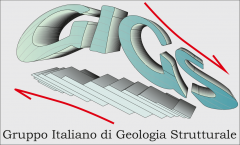Dear Colleagues,
research on active faults has developed in parallel with the evolution of modern geosciences. Therefore, beyond any doubt, it is now considered that earthquakes on active faults are recursive natural hazards. Their recurrence, in general, is measured in hundreds to thousands of years, which is far beyond and reasonably complete historical record. The seismotectonic characterization of an area and the understanding of maximum expected earthquake magnitude on each fault is the result of the active fault research. In addition, the complexity of the geology and the tectonic geomorphology of the faults is also significant. Although analytical methods—such as palaeoseismology, InSAR and remotely sensed data collection, and probability analysis of earthquake recurrence—have considerably improved, a few crucial questions remain: Is earthquake geology close to a limit? Where can the new progress come from?
In this Special Issue (Morphogenic Faulting: Current Practices and Future Challenges), we welcome review papers or case studies highlighting the procedure of selection of the best methods, to address parameters like geological complexity, maximum expected earthquake magnitude and their recurrence interval. Special focus will be also on the mathematics that can provide us with the best magnitude estimation based on the earthquake geology of active faults and the more realistic recurrence interval. In addition, we welcome papers on low slip-rate to extremely high slip-rate active faults on the topics such as developments/improvements in palaeoseismology, archeaoseismology, and modelling earthquake ages.
Some keywords for the expected topics:
- Earthquake Geology
- Tectonic geomorphology
- Palaeoseismology
- Morphometric analyses
- LiDAR and UAV for mapping active faults
- Archaeoseismology
- Modelling earthquake ages
Submission is now open!!
If you are interested, please send to the editorial office a tentative title and a short abstract (100 words) describing the topic covered in your contribution. Papers can be submitted at any time, while accepted papers will be published continuously in the journal (as soon as accepted) and will be listed together on the special issue website.
Journal details: Geosciences is one of MDPI's open-access journals, indexed in ESCI-Web of Science, Scopus and other dataases.
The Scopus CiteScore 2019 is 2.1 (equivalent to rank Q2 in the category "Earth and Planetary Sciences")
The Article Processing Charge (APC) for publication in this open access journal is 1200 CHF (Swiss Francs).
You may find more details on the submission procedure at the website:
https://www.mdpi.com/journal/geosciences/special_issues/morphogenic_faulting#published
We look forward to hearing from you.
Ioannis Koukouvelas, Riccardo Caputo and Tejpal Singh (Guest Editors)
Geosciences Special Issue - Morphogenic Faulting: Current Practices and Future Challenges
-







